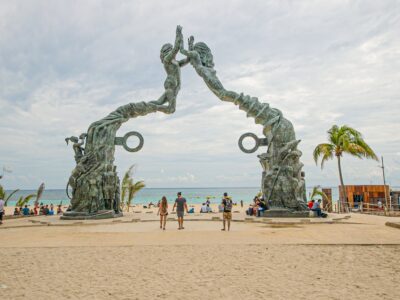A fight over donations, accusations of poor animal care, and use of inadequate facilities are facing the animal rights movement in Yucatán. Organized groups and so-called “independent rescuers” have entered into a debate over donations, with accusations that some have found a way to do business with the money they receive from people, either for rescuing or sterilizing animals.
The president of the Perpopolis Orientation Center, a Civil Association, Lourdes Durán Leal, explained in an interview that in recent years, many groups and independent rescuers have emerged as part of a “boom” in the so-called animal rights culture that fights for animal rights and well-being.
Through this struggle, important things have been achieved, such as laws and criminal penalties against those who commit acts of animal cruelty, support for shelters, and official sterilization campaigns. However, it has also led many to view this movement as a way of doing business, the interviewee noted. The main business is donations, which have attracted many people who, without the knowledge, ability, or adequate space to dedicate themselves to rescuing these animals, do it for the money they receive, which can be a significant amount, especially in cases that go viral on social media, he explained.
This has not only caused division and confrontations between collectives and independents, but has also harmed many animals, especially female dogs, who are spayed using inappropriate but cheap methods and, in many cases, with fatal consequences.

For example, she continued, through our civil association, we have disseminated and reiterated that pregnant dogs should not be spayed because it represents a danger to their lives, and in any case, if the decision is made, it must be done using general inhaled anesthesia.
“That procedure has a minimum cost of 1,500 pesos, but they prefer to seek out veterinarians who lack ethics and perform the procedure without anesthesia for 300 pesos. They save 1,200 pesos, but the dog usually ends up dead,” she emphasized. Furthermore, carrying out these types of sterilization campaigns in Mérida is not just a simple matter. It requires a procedure and a request for permits from the Yucatán Ministry of Health. So, to avoid these permits and procedures, they rely on veterinarians from neighboring municipalities, especially in Kanasín.
She indicated that she and other associations have filed complaints against “independent rescuers” and veterinarians for cases involving malpractice and sterilizations performed without due process, in an attempt to put a stop to this situation.
Elsa Arceo, coordinator of Independent Animal Rescuers of Yucatán, acknowledged that many of the people who rescue animals lack the minimum training to do so, and is therefore asking state and municipal authorities to conduct a census to determine the status of this sector in the state.
“We are asking the authorities to regularize and determine how many people are dedicated to being independent rescuers, so that everything is more transparent and that the donations and aid given by people truly reach the animals they rescue,” she stated.
In this regard, Durán Leal designed the “Healthy Rescuer’s Manual,” which she has already submitted to the Mérida City Council and the State Congress so that it can be analyzed and established as a regulation for the proper rescue of animals and the proper sterilization process.
There are also so-called “rescuers” who run shelters to rescue stray dogs, but when you actually see them, the dogs are in terrible conditions, which also represents an act of mistreatment and animal cruelty.
“Of course, they do it to receive donations and support, as they’ve seen that many people do contribute to animal welfare causes, especially many foreign residents, but they don’t have the necessary conditions or the right location and they only do it as a business, and this has begun to provoke a confrontation between well-established civil associations and independents,” he explained.
TYT Newsroom
The post Animal rights movement in Yucatán is distorted first appeared on The Yucatan Times.














